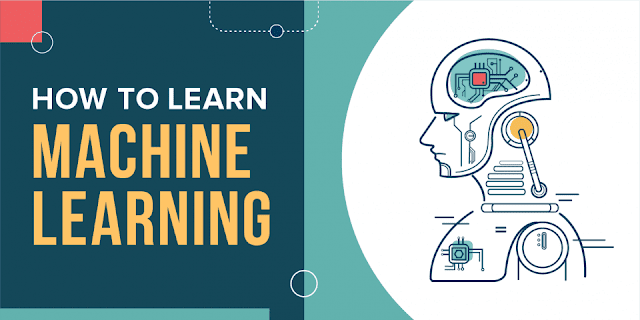Machine Learning Roadmap from Zero to Pro 2023
Introduction to Machine Learning
Machine learning is a field of artificial intelligence that empowers PCs to gain from information without being expressly customized. It involves the use of algorithms and statistical models to analyze and draw predictions or insights from large datasets. Machine learning has several applications, including image recognition, natural language processing, speech recognition, and decision-making systems.
Prerequisites for Machine Learning
To become a machine learning engineer, you need to have a strong foundation in mathematics, computer programming, and statistics. These skills are essential in understanding the underlying principles of machine learning algorithms and frameworks.
Mathematics for Machine Learning
Mathematics is an essential component of machine learning. The following are the essential mathematical concepts you need to know:
Linear Algebra
Linear algebra is the study of vectors and matrices. It is essential in understanding the mathematical operations involved in machine learning algorithms, such as matrix multiplication and matrix inversion.
Probability and Statistics
Probability and statistics are used to analyze and model data in machine learning. You want to have a decent comprehension of probability distributions, hypothesis testing, and regression analysis.
Calculus
Calculus is used to optimize machine learning models by minimizing or maximizing the objective function. You need to know how to calculate derivatives, integrals, and partial derivatives.
Programming Languages for Machine Learning
Several programming languages are used in machine learning. The following are the most popular programming languages for machine learning:
Python
Python is the most popular programming language for machine learning. It has a vast ecosystem of libraries and frameworks, making it easy to build machine learning models.
R
R is a statistical programming language that is widely used in data analysis and visualization. It has several libraries for machine learning, such as caret and mlr.
Julia
Julia is a high-performance programming language for scientific computing. It is becoming increasingly popular in machine learning because of its speed and convenience.
Machine Learning Libraries and Framework
- Machine Learning Models
There are several machine learning models you need to figure out how to turn into an AI engineer. Some of the most popular models include:
Linear Regression
Linear regression is a supervised learning model used to predict continuous values. It involves finding the best-fit line to describe the relationship between the independent and dependent variables.
Logistic Regression
Logistic regression is a supervised learning model used for binary classification problems. It predicts the probability of an event occurring based on the input features.
Decision Trees
Decision trees are a supervised learning model used for both classification and regression problems. They involve partitioning the data into subsets based on the input features to make decisions.
Random Forest
Random forest is an ensemble learning model that combines multiple decision trees to improve accuracy and reduce overfitting.
Gradient Boosting
Gradient boosting is another ensemble learning model that consolidates various feeble models to make serious areas of strength for a. It works by fitting the model to the residuals of the previous model.
Neural Networks
Neural networks are a type of AI model enlivened by the construction and capability of the human cerebrum. They are used for both supervised and unsupervised learning problems.
Deep Learning
Deep learning is a subfield of machine learning that involves the use of neural networks with multiple layers. Deep learning models have shown remarkable performance in computer vision, natural language processing, and speech recognition. Some of the most popular deep learning models include:
Convolutional Neural Networks (CNNs)
CNNs are a type of neural network used for image recognition and computer vision tasks. They involve convolutional layers that learn features from the input image.
Recurrent Neural Networks (RNNs)
RNNs are a type of neural network used for natural language processing tasks. They involve recurrent layers that can handle sequential data.
Generative Adversarial Networks (GANs)
GANs are a type of neural network used for generative tasks such as image and text generation. They consist of two networks: a generator network and a discriminator network.
Natural Language Processing (NLP)
Natural language processing is a subfield of machine learning that involves the analysis and processing of human language. Some of the essential concepts in NLP include:
Text Preprocessing
Text preprocessing involves cleaning and transforming raw text data into a format that can be used by machine learning algorithms.
Bag-of-Words Model
The bag-of-words model is a method of representing text data as a matrix of word frequencies.
Word Embeddings
Word embeddings are a type of feature representation for text data that maps words to high-dimensional vectors.
Recurrent Neural Networks for NLP
RNNs are commonly used in NLP for tasks such as sentiment analysis, text classification, and machine translation.
Computer Vision
Computer vision is a subfield of machine learning that involves the analysis and processing of images and videos. Some of the essential concepts in computer vision include:
Image Preprocessing
Image preprocessing involves cleaning and transforming raw image data into a format that can be used by machine learning algorithms.
Convolutional Neural Networks for Computer Vision
CNNs are commonly used in computer vision for tasks such as object detection, image segmentation, and image classification.
Reinforcement Learning
Reinforcement learning is a type of machine learning that involves learning from interaction with the environment. It is commonly used in robotics and game development. Some of the essential concepts in reinforcement learning include:
Markov Decision Process
The Markov Decision Process is a mathematical framework used to model decision-making in reinforcement learning.
Q-Learning
Q-Learning is a reinforcement learning algorithm that involves estimating the value of each action in a given state.
Deep Q-Networks (DQNs)
DQNs are a type of neural network used in reinforcement learning that learns the Q-values of actions in a given state.
Machine Learning Frameworks
There are several machine learning frameworks you can use to develop machine learning models. Some of the most popular frameworks include:
TensorFlow
TensorFlow is an open-source machine learning framework developed by Google. It is widely used in industry and academia for deep learning and other machine learning tasks.
PyTorch
PyTorch is an open-source machine learning framework developed by Facebook. It is known for its ease of use and flexibility, making it a popular choice for researchers and developers.
Scikit-Learn
Scikit-Learn is an open-source machine learning library for Python. It provides a wide range of algorithms for classification, regression, clustering, and more.
Keras
Keras is a high-level neural network API written in Python. It provides a simple interface for building and training neural networks.
Building a Machine Learning Project
To build a machine learning project, you need to follow a few essential steps. Here is a general roadmap to follow:
Step 1: Define the Problem
The first step in any machine learning project is to define the problem you want to solve. This involves understanding the data and defining the problem as a supervised or unsupervised learning task.
Step 2: Gather and Preprocess the Data
Once you have defined the problem, the next step is to gather and preprocess the data. This involves cleaning the data, transforming it into a format that can be used by machine learning algorithms, and splitting it into training and testing sets.
Step 3: Choose a Model and Train it
After preprocessing the data, the next step is to choose a machine learning model and train it on the training data. This involves selecting hyperparameters, tuning the model, and evaluating its performance on the testing data.
Step 4: Evaluate and Improve the Model
Once you have trained the model, the next step is to evaluate its performance and improve it. This involves analyzing the results, tweaking the model architecture and hyperparameters, and retraining the model on the updated data.
Step 5: Deploy the Model
After improving the model, the final step is to deploy it in a production environment. This involves integrating the model into your application and ensuring that it performs well in real-world scenarios.
Conclusion
In conclusion, the journey from zero to pro in machine learning can be challenging, but with dedication and practice, it is possible to become a proficient machine learning engineer. By following the roadmap outlined in this article, you can gain the skills and knowledge necessary to build powerful machine learning models and solve complex problems.


.jpg)
Comments
Post a Comment